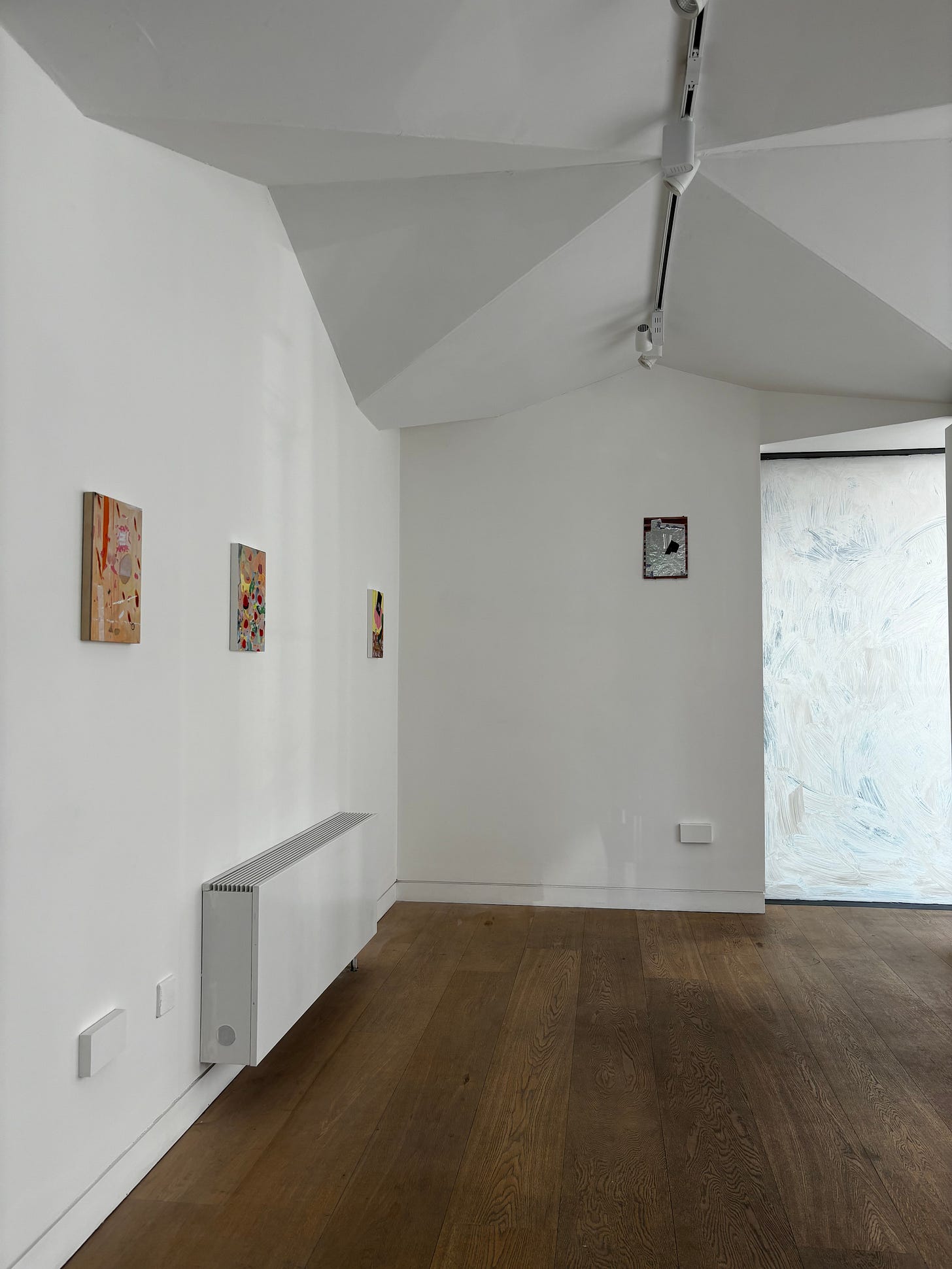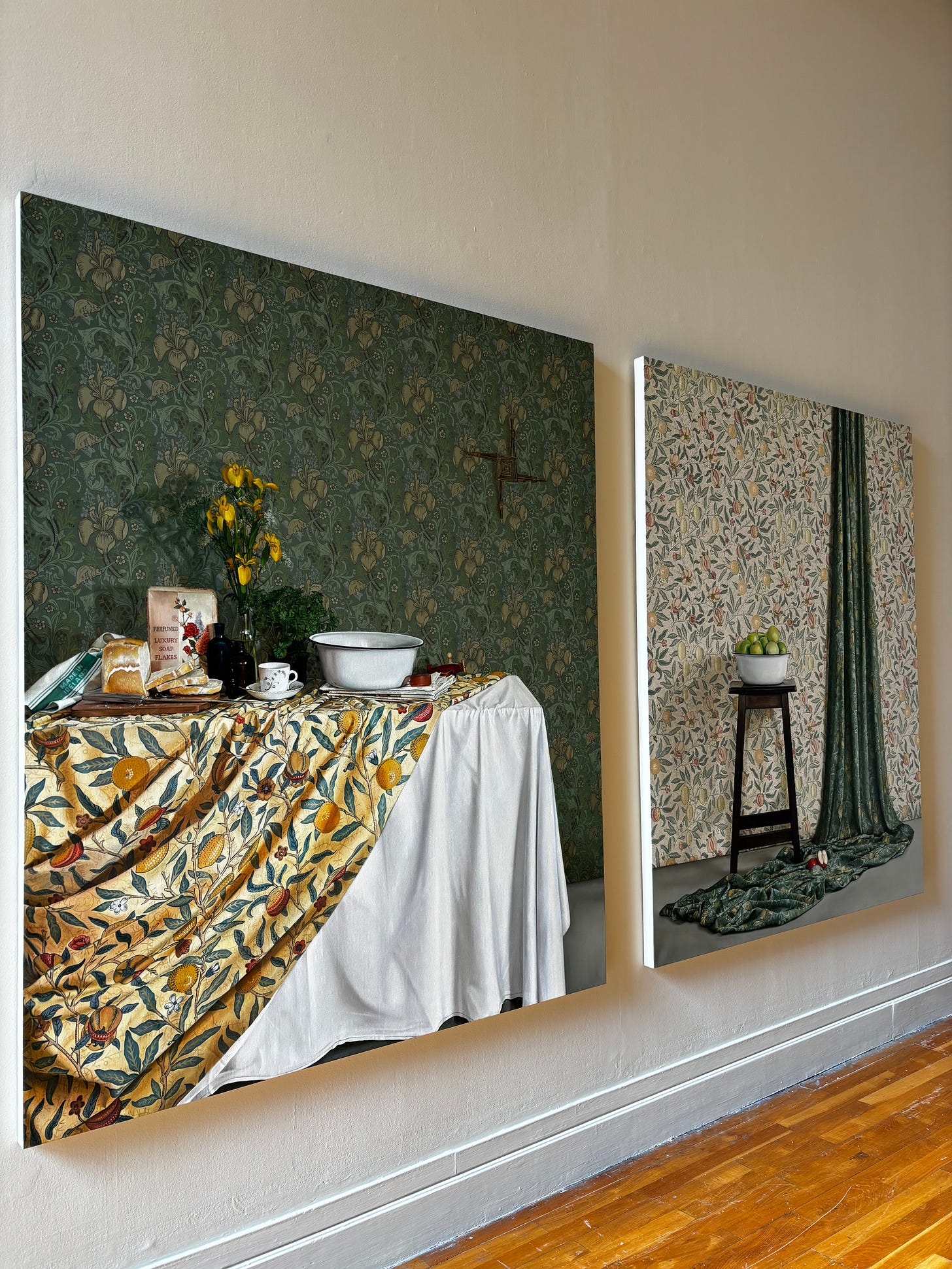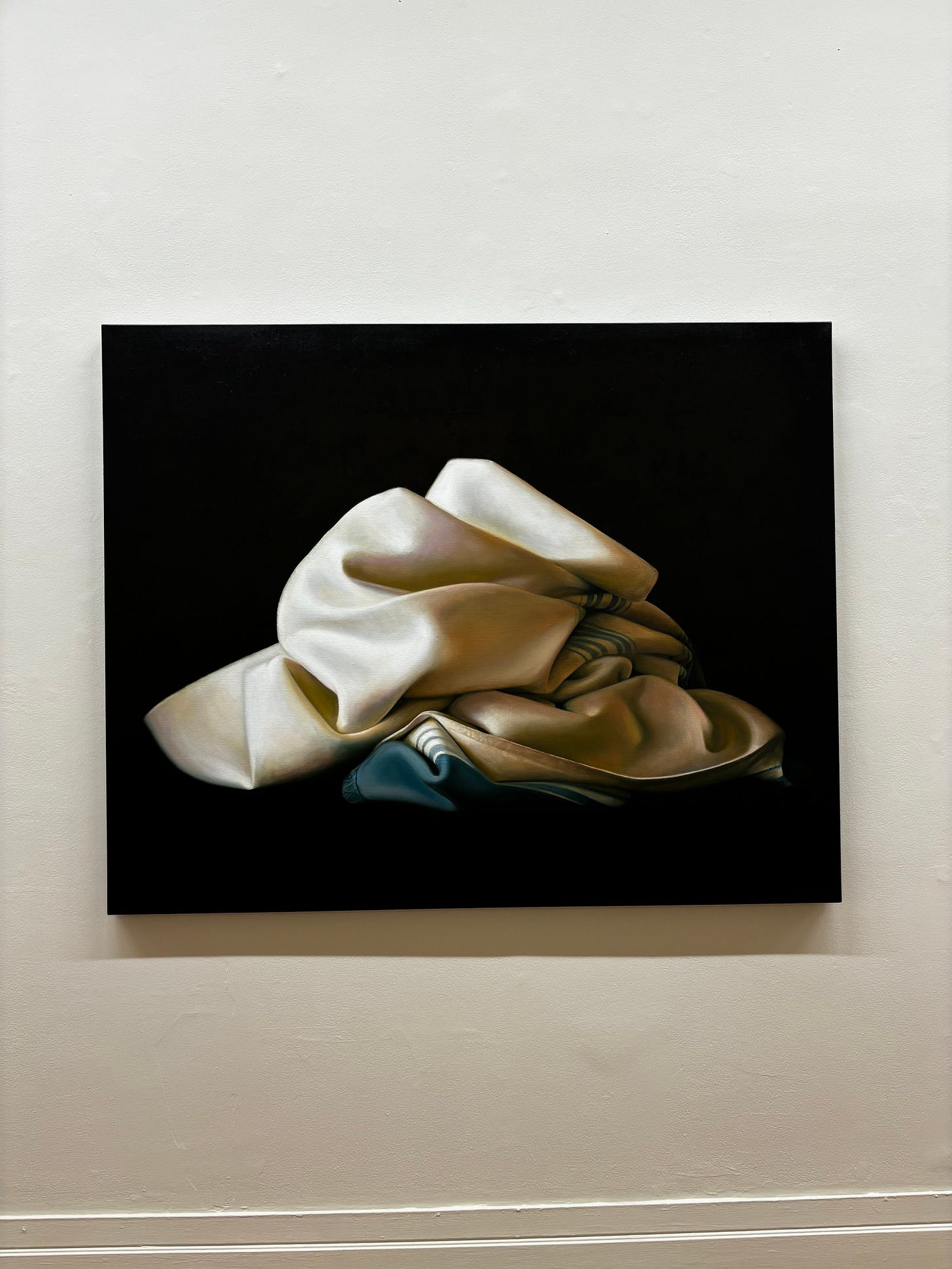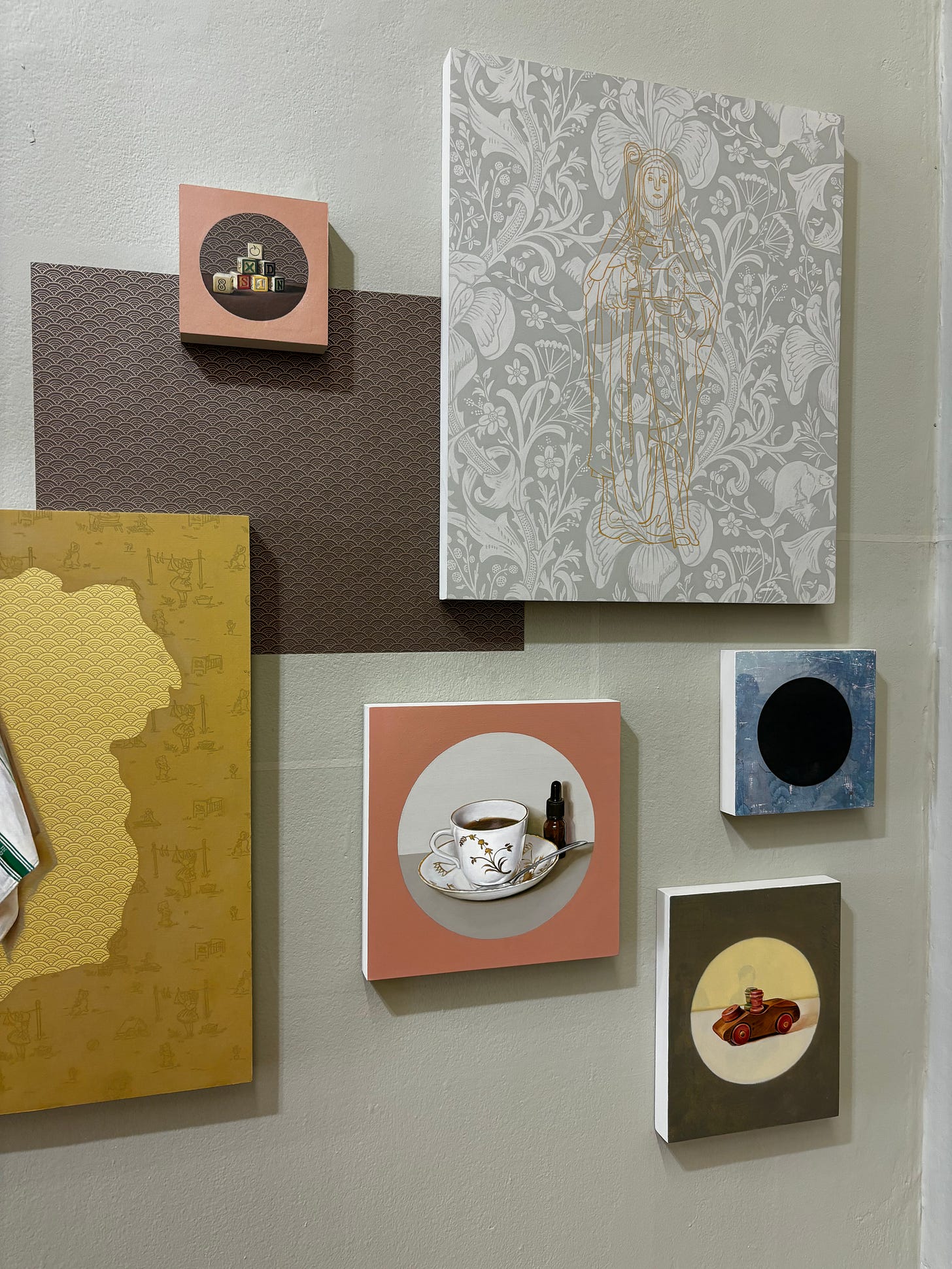We’re good in Ireland at not talking about certain things. We hide them under the proverbial carpet until people start tripping over the bumps and asking awkward questions. In recent years a lot of these bumps have been revealed and discussed, but I’m always taken by how individuals find their way around secret or taboo topics to express the sometimes inexpressible.
I express myself usually using words, and so I look to visual art to see how people do it using images, imagery, symbols, colour. For me, visual art appears to not be about accentuating the obvious so much as about the artist expressing their internal reaction to an internal or external thing.
As a visitor to an art gallery, you’re left to imagine what the artist’s intention was. Depending on your knowledge of the topic or medium at hand, you will impose certain ideas or presumptions onto what you see.
Recently I visited the RHA Gallery in Dublin to see a new exhibition by the artist Jennifer Trouton, called In Plain Sight. But first I met with the artist Louise Ward, an artist-in-residence at the RHA who has an exhibition downstairs called The Colour of the Day.
Louise generously showed me around her exhibition and told me about the genesis of her artworks - what inspired them, why she used specific materials, and why she selected certain locations to place her work in the gallery. By getting this insight from her, I was handed the key to understanding the connections between the pieces. But I could also see how she left space for visitors to discover their own meanings and connections too.
Her exhibition interacted with the space in which it was held in some fun ways. One piece, which has a large sheet of foil wrapping paper on it, was positioned so that it reflected some of the green light from the room’s ‘Exit’ sign if you stood in a certain place. Another artwork has the words ‘keep off’ on it, and Louise showed me how this was a copy of a post-it note sellotaped to a nearby rad.
The room and her artworks reflected and even melded into each other at points, which you might not notice unless you looked closely. To add to the surprise, a gorgeous song plays every few hours, giving the experience a lovely, gauzy feel, like you’re cocooned away in a different world.
It made me think about all the things I’d missed on my other visits to galleries - all the secret signs and messages other artists had left that I hadn’t spotted. But I could see too that going into a gallery knowing nothing gives you a certain sense of freedom. There’s no ideal way to engage with the work; viewing it will always mean a negotiation between what the artist has created and what you assume. When your brain fizzes with an idea about what you’re seeing, it’s good if there’s no one there to pop up and whisper ‘actually…’ into your ear.
Afterwards, I went upstairs to Belfast-based artist Jennifer Trouton’s exhibition, In Plain Sight. Though the rooms were airy, there was a dense volume of work on show - huge detailed, hyperreal oil paintings; embroidery; smaller botanical paintings; fabric; and painted wallpaper.
At first glance, her realist work seems to celebrate the domestic space in Ireland. The William Morris-style wallpaper, the antimacassar on the back of an armchair with ‘Mater Hibernia’ embroidered on it, the still lives of fruit and other household objects, the children’s toys. It all felt so familiar. Sometimes this was because it linked to my own childhood (like the huge painting of a cream blanket, as we had them too at home), sometimes because it symbolised an older Ireland that has been baked into the national identity.
But look closer and you start to wonder - what are these flowers she is painting? Is that a pelvis, or a map of Ireland? The work often mirrors itself, and uses repetition as a way of encouraging you to question what you are looking at.
The colour palette across Trouton’s exhibition is soothing - greens and yellows and browns, dusky pinks and soft yellows. Nostalgic, autumnal, seventies.
As I walked around, I thought of what Louise’s exhibition showed me - to look and keep looking. The meaning behind Trouton’s work started to reveal itself, like one of those magic eye puzzles from when I was a child, where a dolphin would leap out of a fuzzy square if you stared hard enough.
Trouton’s exhibition is about Ireland and the Irish home, yes. But it’s chiefly about reproductive rights and Ireland’s long, intense relationship with this thorny topic. Once you realise the connection, it seems obvious: there it was, hidden all along - as the title goes - ‘in plain sight’.
The artworks made me think about the ideas we have around Irishness, and the idea of an Irish home. The tropes and stereotypes around Irish mammies, the parlour room, the hopes of good behaviour, the silence around certain topics. The role of the woman in the domestic space and what happens when a woman messes with that.
Trouton is paying homage to the orderliness and quiet beauty that can be found in the domestic space, while pointing to the hidden stories that lurk behind the patterned wallpaper.
In Plain Sight disrupts what we expect of what we see. There’s one wall of detailed flowers, for example, which are delicate in their beauty. It transpired they can be used as abortifacients.
When I was at the RHA, two young people were looking at the artworks too, asking each other about the ‘meaning’ of pieces. But it seemed they weren’t discussing their theories to try and one-up each other. It was all approached in a way that showed they were finding satisfaction in teasing it all out - what they could see, what it told them, what else they might discover.
Jennifer kindly sent me an accompanying book about the exhibition, called One of Many, where she gathered women from around Ireland to write about reproductive justice. It opens with a piece by the excellent art critic Cristín Leach, which is a response to Trouton’s work but also about stigma and loss.
There are other pieces in One of Many which open up more layers to this exhibition. It’s a collection of individual stories and responses to the topic of abortion, which themselves connect to the greater story of Irish women’s history. Some highlight that depending on where you live on the island, you can have a different experience when it comes to your reproductive rights. The book is personal, but political, just as the exhibition is.
You can sit and take the artwork as it is - it’s so beautiful to look at - or tease out its many potential meanings. It felt very powerful to see how Trouton had taken this approach to the topic, which is informed by years of study and research.
In Plain Sight lingered with me after I visited, as did its implicit promise that a second visit would reveal even more.
There’s more on the RHA website about how Trouton was inspired by women’s stories found in archives to create this work.
These lines stood out to me:
In many cases, they found the objects of their own emancipation in the domestic spaces that were assigned to them. They found them in plain sight.
In Plain Sight and The Colour of the Day both run at the RHA Gallery in Dublin until 20 October. Photos above taken by me.








